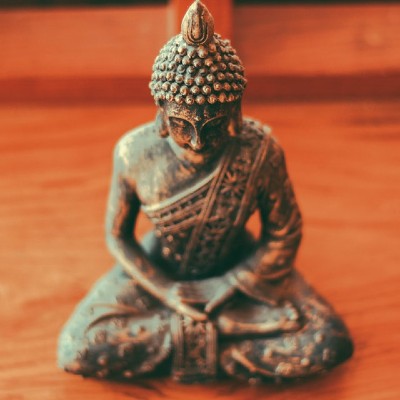Ajahn Chah said that all people without exception are mentally ill. If I take time and, instead of thinking about Carolyn and Her Problems and focus on other people, I find I am less so. I have practiced in this way 2009 within a volunteer program that was initiated by IMCW, Insight on the Inside, IOI.
In 2018, the District of Columbia Department of Corrections established a new unit in the detention center called Young Men Emerging or YME. The philosophy was to invest in rehabilitative programing for young men 18-25 and to pair the young men with mentors–older men serving decades of time since their youth. The program is a model in corrections innovations, a therapeutic and rehabilitative space aimed at early intervention.
When this unit opened, we were invited to teach there. I had started volunteering in Alexandria Detention Center, a federal detention center, and had taught in substance abuse treatment, mental health, and women’s units. Young Men Emerging was a new challenge, but there was one day in particular that I went to teach that was remarkable.
I have a background in art and from time to time have taught art to “free people,” including a few drawing classes in the free people meditation world–but this was the first time I taught art in the jail. I have developed a few practices that work well for people who have between a little and a lot of experience with drawing. One of the practices is drawing a mandala, and this is the one that I taught in YME that day.
You can try this. The materials needed are a square piece of plain paper and pencil. (Mechanical pencils are a good choice because they always sharp and have an eraser handy).
A mandala is a map or record of a journey; so, draw your journey. The first drawing decision has been made: the size and shape of the paper. The four sides of the outermost square of traditional mandalas are gates, so you might imagine entering your exploration of your journey from one or all edges of the paper. I bring a book of mandalas to look at for ideas, that can be helpful for some people.
Some ways of thinking about our journeys can be:
- From who I thought I was to who I really am
- From outer to inner
- From childhood to adulthood
- From not knowing to knowing
- From knowing to not knowing
- From lost in thought to presence
Imagine a class where normally–due to noise, interruptions, high energy, low attention span, the developmental teetering between child and adult, and all the attendant posturing due to the needs of belonging and looking cool–imparting five minutes of instruction feels like a good class, a big accomplishment.
That day, I had gone through the drawing instructions briefly and no one was interested in looking at examples of other mandalas. Immediately the group settled into 25 minutes of quiet, focused, peaceful absorption. The young men knew how to draw their journey. And the drawings were good.
Drawing and meditation function similarly for mental health. To concentrate and stabilize the mind, a meditation instruction aims to establish an anchor and, by placing the attention on the anchor, develop stability of mind: intentional attention. The anchor is often the breath, sometimes sounds, a mantra or metta prayer or mindful movement like yoga or tai chi. Or drawing.
But drawing, unlike following the breath and more like yoga, might be well-suited to people for whom the trauma of living in the body makes sitting still almost torture. And unlike yoga, drawing is a kind of talking- a way of communicating without words.
Drawing and other art, given the right conditions, comes very naturally. This seems so important. How did we get ourselves into such a pickle where “great” art is rare and for the rest of us, after childhood, art is an extra thing, an elective–or women’s work?
When I reflect on the volunteer work of IOI, delivering the tools of mindfulness practices has been the work, but the journey of it has been to recognize the feeling of awe for one another.
When you look at others think
That it will be through them
That you will come to Buddhahood.
So look on them with frank and loving hearts.
~ Shantideva
Insight on the Inside (IOI) volunteers began by going into correctional facilities to teach meditation. Now an independent 501(c)(3), it has a broader mission: to inspire and empower by teaching mindfulness meditation and other contemplative practices to people in communities of need, including those who are incarcerated or returning from incarceration, in substance abuse treatment, or affected by poverty, aging or illness.
Pre-pandemic, volunteers taught 17 meditation classes a week that included rehabilitation and medical treatment for homeless men and women as well as the Georgetown University Pivot Program, a business entrepreneur program for returning citizens. Currently we are adjusting to the new landscape, teaching Zoom to and providing materials for tablet uploads in the District of Columbia Department of Corrections and for distribution in Arlington County Detention Facility. Carolyn Stachowski, IMCW teacher, is the Program Director at IOI.



